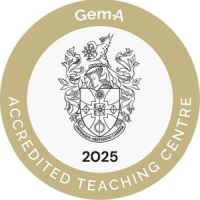| Flinders Island "Maireener shells" et "Diamants de Killiecrankie" |
| 9 janvier 2018 |
| "> |
| Nous sommes hébergés chez Mick et Marianne, juste à coté de l'aéroport. Situation idéale pour les départ vers le sud et le nord. Nous partons à Lady Barron 2x par jour à la marré basse pour les coquillages et le déjeuner et diner qu'on apprécie à Flinders Tavern. A voir aussi Abalone factory, situé à port, géré par Peter Place. Les abalones vous pouvez aussi pecher sur place à condition d'voir une licence. Whitemark |
| Située dans le détroit de Bass, Flinders Island est la principale île de l'archipel Furneaux, au nord-est de la Tasmanie. |
GéographieL'île se situe à 141 km à l'est-sud-est du cap Wellington, sur la péninsule Wilson (État de Victoria). Au sud, l'île Flinders est séparée de l'île du Cap Barren par le Franklin Sound, un détroit orienté est-ouest et large de 7,7 km dans sa partie la plus étroite. . Elle mesure 63 km de long pour 37 km dans sa plus grande largeur et a une superficie de 1333 km². Elle a 800 habitants répartis sur trois communes: Whitemark, Lady Barron et Killiecrankie. |
HistoireDans les années 1830, après la Guerre noire, les Aborigènes de Tasmanie survivants furent déplacés de force à Flinders Island. |
| Topaze de Killiecrankie |
| Topaze a été trouvé dans la région de Killiecrankie, au nord de l'ile. |
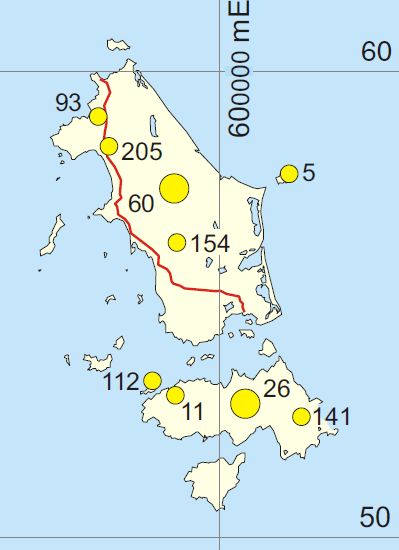 |
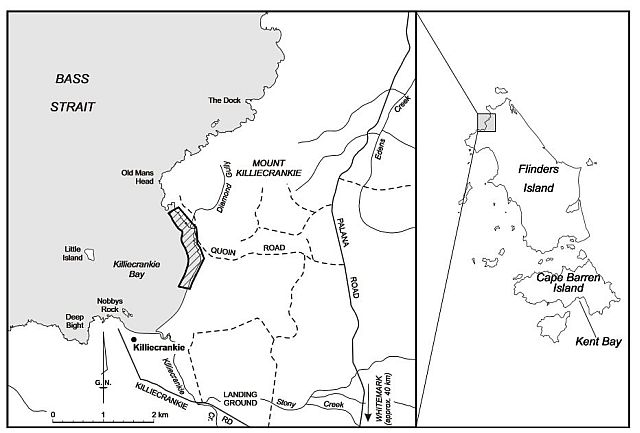 |
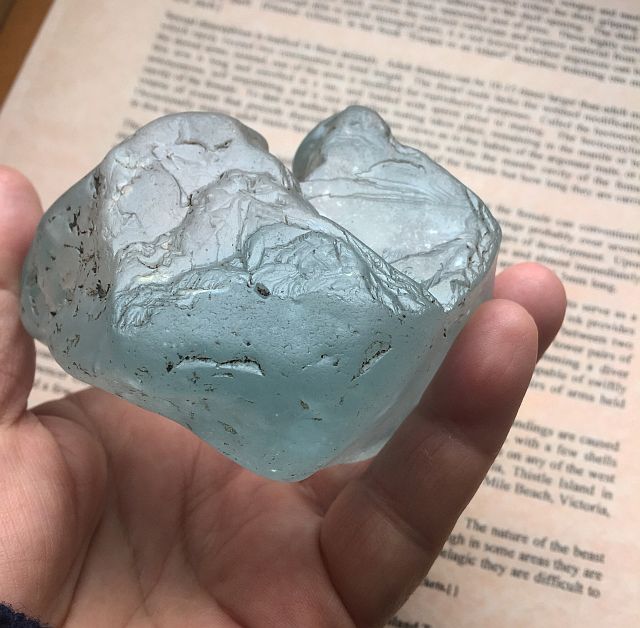 |
| Topaz from the collection of Margaret Wheatley. Fossicking gear and directions are available from Margaret Wheatley at Killiecrankie Enterprises in Whitemark or call 0428 592 130. |
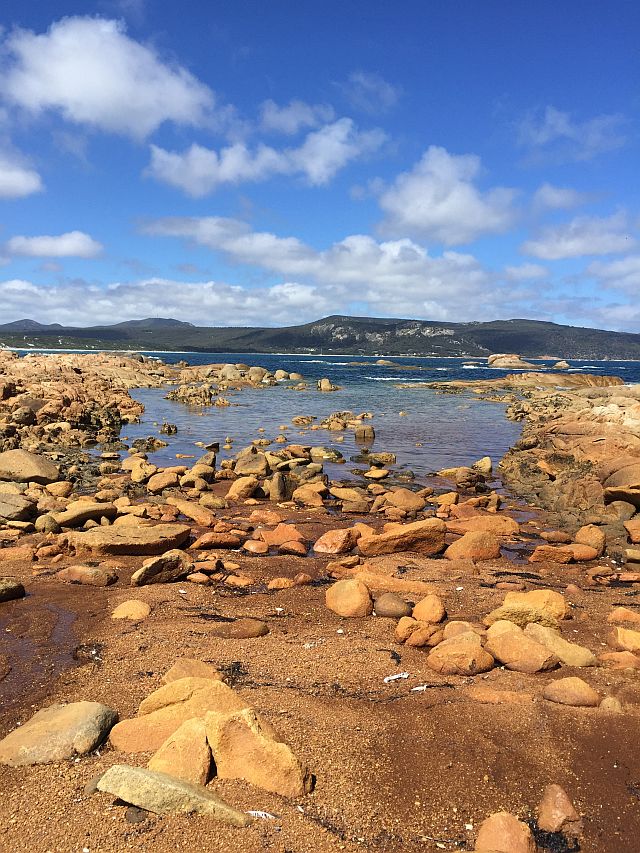 |
| The tides and weather influence fossicking time at Diamond Gully as there is about a 3 metre tidal range. Go all the way to the end of the beach, then about 100 to 200m around on the rocks. Be there for the bottom of the tide and look for small rock pools at the low tide mark. Hand digging may be required, so have some good gloves and be prepared to get wet. Some rock pools will have spiky sea erchins in them and blue ringed octopus are also there. Try to get to the bottom of the hole you choose to work as most of the stones will be sitting on the granite at the base of the hole. Apart from topaz, when digging you will also find many sea critters, various starfish, many different species of small crabs, small fish, shells and worms etc |
 |
| Miners Creek |
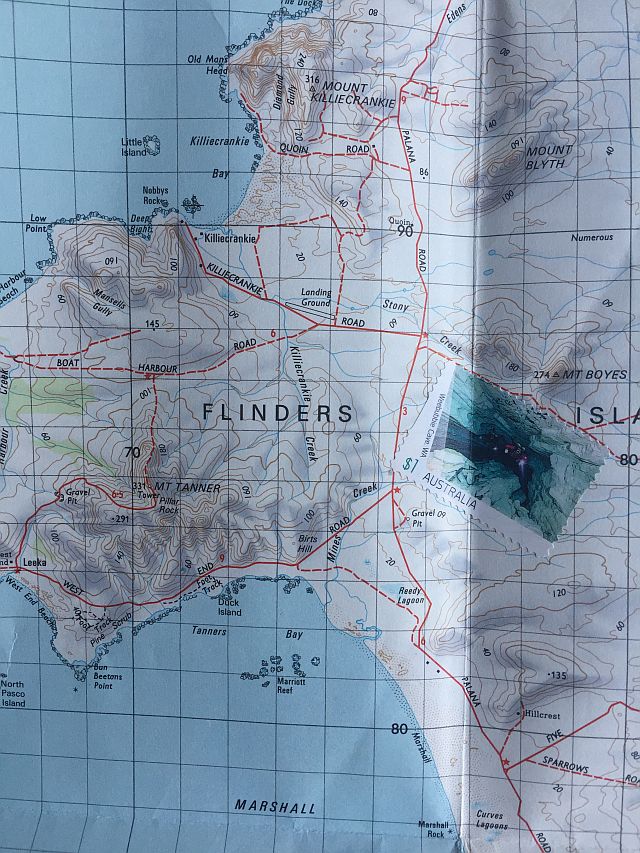 |
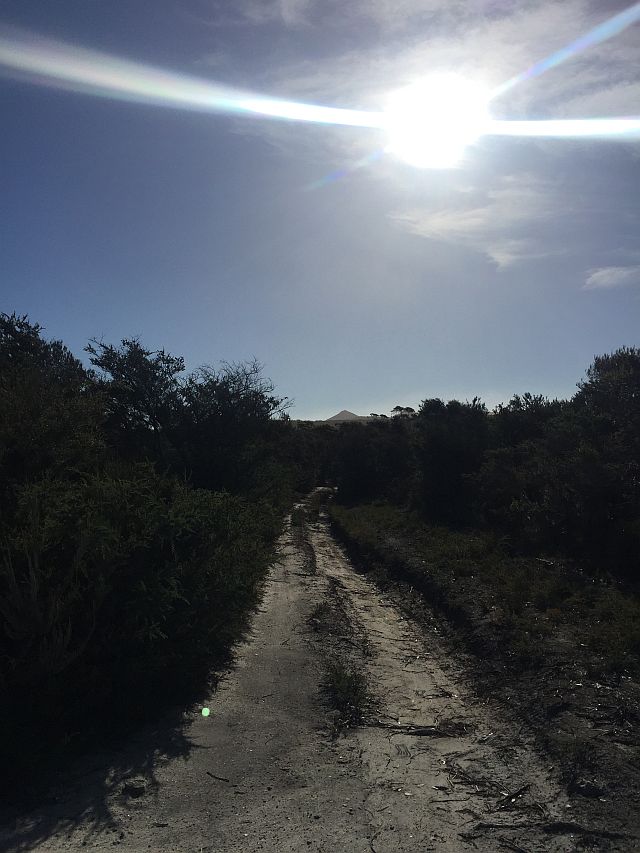 |
| So to give you the short of it: the creek produces good small crystals, but I found none on the 1/2, though it's still very good as a fast way to screen off the coarse gravel. The water depth was ok for shorts when I was there, you wouldn't need waders. I did ok a couple of hundred meters down the creek from the main mining area. The area around the mouth of Diamond Gully seems very thoroughly fossicked. It was hard to see any gravel-sized material, and it's only worth the 1 km walk along the beach in really low tide. BTW I wouldn't advise driving along the beach, it seems nice and hard at the Killecrankie end, but the sand suddenly gets soft about 1/2 way through. The walk is about 1 hour from Killiecrankie to Diamond Gully. Also worth visiting the next bay along after that, for a spectacular calcarenite arch. |
| Liens utiles : |
|
The Maireener Shell, Phasianotrochus Irisodontes, found only in the Southern seas of Australia and used by Aboriginal women for thousands of years, it is great cultural significance. Traditionally the shell was used as ornament, with strings broken apart in mourning. They were also used in trade for flint and ochres. The tradition of stringing shells continues in Tasmania today, with necklaces represented in most major museums and public galleries. They are valuable heritage items. See Lola Greenos work at Ian Potter Museum, Museum of Tasmania and the Powerhouse Sydney. The Maireener shell is only found in limited locations, of the twelve recorded locations in Victoria three are to be found in the proposed dredge areas. Phasianotrochus is a herbivore and grazer. They feed and live on the seagrasses Amphibolus and Posidonia. They are found at the low tide mark to a depth of five metres. At breeding time in summer they cover themselves in soft corals and migrate to deeper water to a depth of ten metres where they lay their eggs, which float for one or two days before anchoring themselves. They then migrate back in April. When they are found, they are found in abundance. They are an important source of food for Parrot fish and they live for one year. |
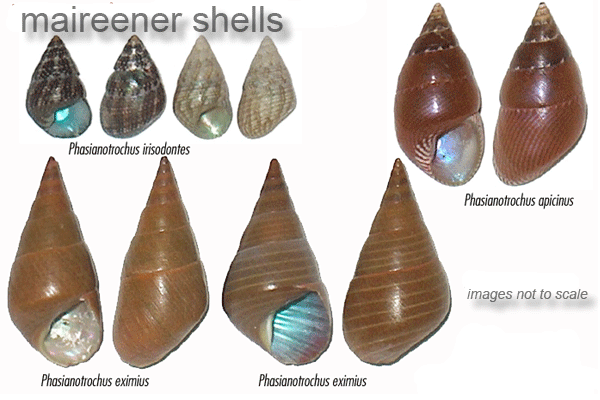 |
| "> |
| Liens utiles |
| http://lola-greenos-maireener-workshop.blogspot.com.au/ |
| http://www.tas-aboriginal-elders.org.au/necklace-making |
| https://australiandesigncentre.com/explore-promo/past-exhibitions-and-events/living-treasures/lola-greeno-cultural-jewels/ |
| Flindres - Killiecrankie diamonds (topaz) |
| "> |
|
| Informations pratiques |
| Pour y aller |
| Vol de Qantas (jetstar) de Brisbane à Launcestion |
| Vol à Flinders Island |
| Sharp airlines http://sharpairlines.com/ Call 1300 55 66 94 |
 |
| Hébergement à Flinders |
|
TEL
03 6359 2188
0427 592 188
info@flindersislandcp.com.au
flindersislandcp.com.au
1 BLUFF RD, WHITEMARK TAS 7255 |
| Topaze |
| Marje Virieux in Henwood Street à Lady Barron. |
| Tides |
| Killiecrankie bay |
| Où manger |
| Shearwater Restaurant http://furneauxtavern.com.au/kipli/ |
11 Franklin Parade, Lady Barron TAS 7255, AUSTRALIA
Telephone:+61 (3) 63593521 |
| Bakery at Whitemark |
| Flinders Island Interstate Hotel |
| BBQ |
| Allports Beach Picnic Area |
| Yellow Beach Picnic Area |
| Whitemark Foreshore Picnic Area |
| Trousers Point Camping Ground |
| Killiecrankie Picnic Area |
| Tourism |
| Liens utiles |
| http://flindersislandtravel.com.au/ |
| https://visitflindersisland.com.au/ |
| https://hikingtheworld.blog/2017/04/26/flinders-island/ |
| Mountain Seas Art and Wilderness Retreat |
| The Patriarch Wildlife Sanctuary Camping Ground |

